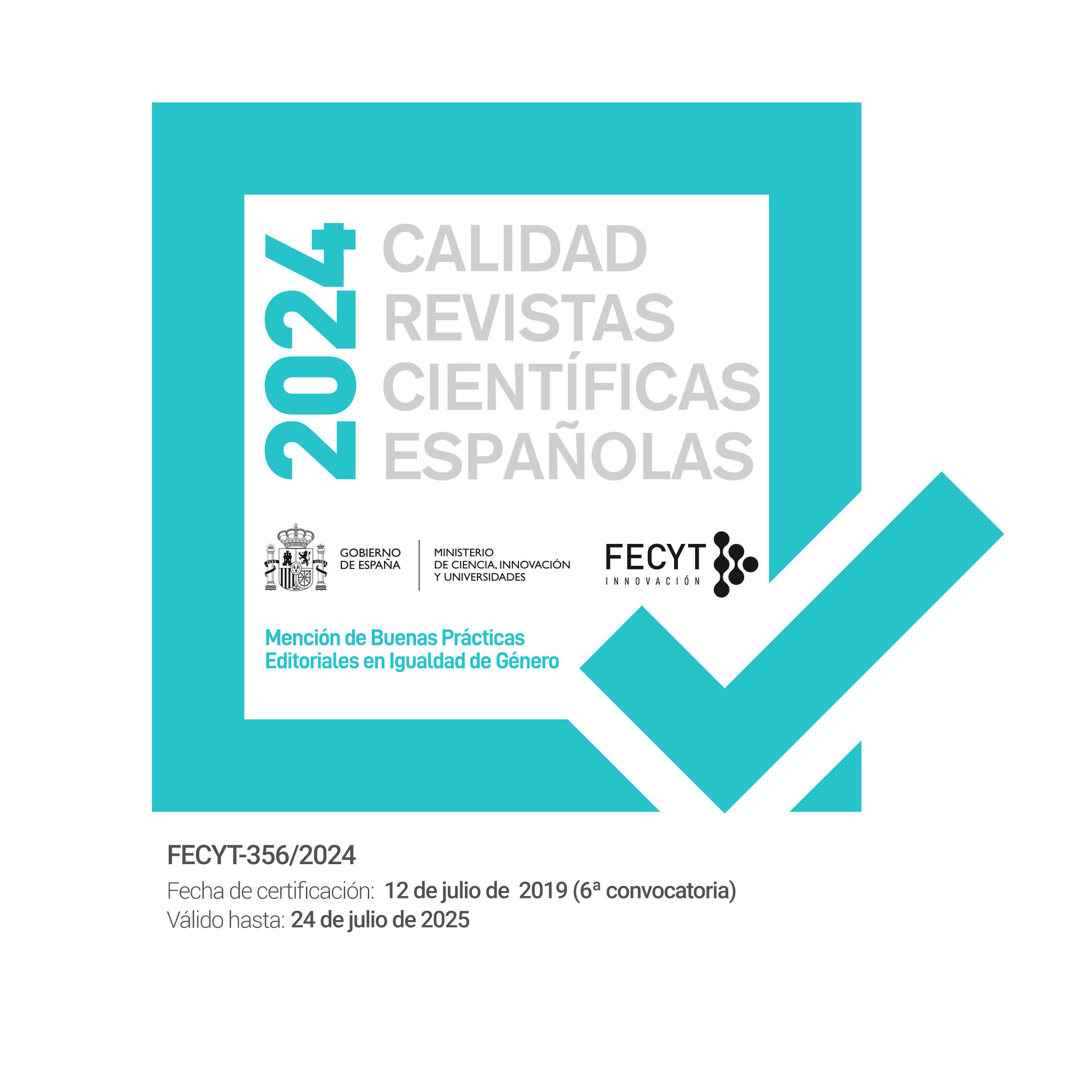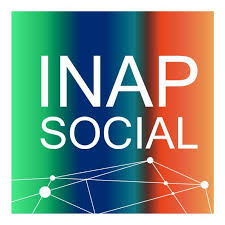Estrategia omnicanal para no usuarios del e-gobierno
DOI:
https://doi.org/10.24965/gapp.v0i18.10463Palabras clave:
Factor dual, e-gobierno, e-administración, usuarios, e-servicios, omnichannelResumen
Las organizaciones públicas vienen incorporando canales de distribución para que los ciudadanos puedan acceder a los servicios públicos. Si bien existían elevadas expectativas en relación a la adopción del e-gobierno por parte de los ciudadanos, las tasas efectivas de uso no están alcanzando los niveles deseados. Por ello se une un nuevo enfoque, la omnicanalidad, que sugiere la valoración de los canales en base a como ayudan a generar la mejor experiencia de uso de los usuarios respecto del total de los canales. El presente trabajo analiza el impacto que sobre la intención de uso del e-gobierno tiene que los ciudadanos vengan empleando la Administración Telefónica o Presencial. Tras una metodología cualitativa y cuantitativa, se establece cómo mientras para los usuarios de la administración telefónica la intención de uso del e-gobierno viene explicada por algunos de los factores favorecedores (expectativa de resultado e influencia social), en el caso de la Administración Presencial el modelo tiene una estructura dual en la que aparecen tanto favorecedores (expectativa de resultado) como inhibidores (inercia y hábito). De la dispar estructura de los modelos se derivan diferentes vías de actuación para lograr incrementar el uso del e-gobierno por parte de los ciudadanos.
Descargas
Citas
AGENCIA DE EVALUACIÓN Y CALIDAD (AEVAL). (2016). Estabilidad y mejora en los servicios públicos. Ministerio de Hacienda y Administración Pública.
BHATTACHERJEE, A. y HIKMET, N. (2007), “‘Physicians’ resistance toward healthcare information technology: A theoretical model and empirical test”, European Journal of Information Systems, 16: 725-737. DOI: 10.1057/palgrave.ejis.3000717.
BHATTACHERJEE, A. y LIN, C.-P. (2015), “A unified model of IT continuance: three complementary perspectives and crossover effects”, European Journal of Information Systems, 23: 364-373. DOI: 10.1057/ejis.2013.36.
BOTTI, S. y IYENGAR, S. S. (2006), “The Dark Side of Choice: When Choice Impairs Social Welfare”, Journal of Public Policy & Marketing, 25 (1): 24-38. DOI: 10.1509/jppm.25.1.24.
CENFETELLI, R. T. (2004), “Inhibitors and enablers as dual factors concepts in technology usage”, Journal of the Association for Information Systems, 5 (11-12): 472-492. http://aisel.aisnet.org/jais/vol5/iss11/16.
COMISIÓN EUROPEA (2014), Study on eGovernment and the Reduction of Administrative Burden. DOI: 10.2759/42896.
COMISIÓN EUROPEA (2015a), eGovernment Action Plan 2016-2020. Roadmap.
COMISIÓN EUROPEA (2015b), Quality of Public Administration. A Toolbox for Practitioners. Abridge Version.
COMISIÓN EUROPEA (2016), EU eGovernment Action Plan 2016-2020. Accelerating the digital transformation of Government.
CONEJERO, E. y REDONDO, J. C. (2016), “La innovación social desde el ámbito público: Conceptos, experiencias y obstáculos”, Gestión y Análisis de Políticas Públicas, 15 (enero-junio).
DOWDING, K. & JOHN, P. (2008). “The value of choice in public policy”, Public Administration, 87 (2), 219-223. DOI: 10.1111/j.1467-9299.2008.01732.x.
GAULD, R., GOLDFINCH, S. y HORSBURGH, S. (2010), “Do they want it? The ‘Demand-side’ of e-Government in Australia and New Zealand”, Government Information Quarterly, 27: 177-186. DOI: 10.1016/j.giq.2009.12.002.
HSIE, P.-J. (2016), “An empirical investigation of patients’ acceptance and resistance toward the health cloud: The dual factor perspective”, Computers in Human Behavior, 63: 959-969. DOI: 10.1016/j.chb.2016.06.029.
IBM. (2014), Authenticity and Advantage in an Omnichannel World. London: IBM Omnichannel Commerce Thought Leadership White Paper.
INSTITUTO NACIONAL DE LA ADMINISTRACIÓN PÚBLICA (2008), E-gobierno para un mejor gobierno. DOI: 10.1787/9789264062603-es.
JILKE, S., VAN RYZIN, G. G. y VAN DE WALLE, S. (2015), “Responses to Decline in Marketized Public Services: An Experimental Evaluation of Choice Overload”, Journal of Public Administration Research and Theory, August: 1-19. DOI: 10.1093/jopart/muv021.
JOSHI, K. (2005), “User resistance and acceptance: A case study using the equity implementation model”, Journal of Information Technology Case and Application Research, 7(1): 6-20. DOI: 10.1080/15228053.2005.10856057.
KAPLAN, A. M. y HAENLEIN, M. (2009), “The increasing importance of public marketing: Explanations, applications and limits of marketing within public administration”, European Management Journal, 27: 197-212. DOI: 10.1016/j.emj.2008.10.003.
KHEDHAOURIA, A., THURIK, R., GURAU, C. y VAN HECK, E. (2016), “Customers’ continuance intention regarding mobile service providers: A status quo bias perspective”, Journal of Global Information Management, 24(4): 1-21. DOI: 10.4018/jgim.2016100101.
KIM, H. y GUPTA, S. (2012), “Investigating customer resistance to change in transaction relationship with an internet vendor”, Psychology & Marketing, 29(4): 257-269. DOI: 10.1002/mar.20519.
KIM, H.-W. y KANKANHALLI, A. (2009), “Investigating user resistance to information systems implementation: A status quo bias perspective”, MIS Quarterly, 33(3): 567-582. DOI: 10.2307/249384.
KOTLER, P. y LEE, N. (2007), Marketing en el sector público. Todas las claves para su mejora, Pearson Prentice Hall, Madrid.
KROENUNG, J., ECKHARDT, A. y KUHLENKASPER, T. (2017), “Conflicting behavioral paradigms and predicting IS adoption and non-adoption: The importance of group-based analysis”, Computers in Human Behavior, 67: 10-22. DOI: 10.1016/j.chb.2016.09.058.
KUMAR, V. (2010), “Customer Lifetime Value-Based Approach to Marketing in the Multichannel, Multimedia Retailing Environment”, Journal of Interactive Marketing, 24: 71-85. DOI: 10.1016/j.intmar.2010.02.008.
LEE, K. y JOSHI, K. (2016), “Examining the use of status quo bias perspective in IS research: need for re-conceptualizing and incorporating biases”, Information Systems Journal, DOI: 10.1111/isj.12118.
LIMAYEN, M., HIRTZ, S. G. y CHEUNG, C. M. K. (2007), “How habit limits the predictive power of intention: the case of information systems continuance”, MIS Quarterly, 31 (4): 705-737. DOI: 10.2307/3250921.
MADSEN, C. y KRÆMMERGAARD, P. (2016b), “Warm Experts in the age of Mandatory e-Government: Interaction Among Danish Single Parents Regarding Online Application for Public Benefits”, The Electronic Journal of e-Government, 14(1): 87-98.
MADSEN, C. Ø. y KRÆMMERGAARD, P. (2016a), “How to Succeed with Multichannel Management: A Case Study of Cross-Organizational Collaboration Surrounding a Mandatory Self-Service Application for Danish Single Parents”, International Journal of Public Administration in the Digital Age, 3(4): 94-110. DOI: 10.4018/ijpada.2016100107.
MINISTERIO DE HACIENDA Y ADMINISTRACIONES PÚBLICAS (2015), Plan de Transformación Digital de la Administración General del Estado y sus organismos públicos (Estrategia TIC 2015-2020), Secretaría General Técnica.
MIRSCH, T., LEHRER, C. y JUNG, R. (2016), “Channel Integration towards omnichannel management: a literature review”, PACIS Proceedings, Paper 288. DOI: 10.15358/0935-0381-2016-4-5-235.
MUNUERA, M. P. (2016), “Agenda digital: e-Servicios sociales”, Gestión y Análisis de Políticas Públicas, 16 (julio-diciembre).
OECD (2012), Working smarter in revenue administration- Using demand management strategies to meet service delivery goals, Forum on Tax Administration. Information note.
OECD (2013), Managing Service Demand. A practical guide to help revenue bodies better meet taxpayers’ expectations.
OECD (2014), Increasing Taxpayers’ Use of Self-Service Channels.
OUELETTE, J. y WOOD, W. (1998), “Habit and intention in everyday life: The multiple processes by which post behavior predicts future intentions”, Psychological Bulletin, 124 (1): 54-74. DOI: 10.1037//0033-2909.124.1.54.
PATSIOTIS, A. HUGHES, T. y WEBBER, D. J. (2013), “An examination of consumers’ resistance to computer based technologies”, Journal of Service Marketing, 27(4): 294-231. DOI: 10.1108/08876041311330771.
POLITES, G. L. y KARAHANNA, E. (2012), “Shackled to the Status Quo: the inhibiting effects of incumbent system habit, switching costs, and inertia on new system acceptance”, MIS Quarterly, 36(1): 21-42.
PONT, J. (2016), “Modelos innovadores de administración y gestión pública: Hacia la emergencia de nuevos paradigmas”, Gestión y Análisis de Políticas Públicas, 16 (julio-diciembre).
REDDICK, C. y TURNER, M. (2012), “Channel choice and public service delivery in Canada: Comparing e-government to traditional service delivery”, Government Information Quarterly, 19: 1-11. DOI: 10.1016/j.giq.2011.03.005.
REY-MORENO, M. y MEDINA-MOLINA, C. (2016), “Omnichannel strategy and the distribution of public services in Spain”, Journal of Innovation & Knowledge, 1 (1): 36-43. DOI: 10.1016/j.jik.2016.01.009.
REY-MORENO, M. y MEDINA-MOLINA, C. (2017), “Inhibitors and non-users of e-government: Determinants of habit and intentions of adoption”, Journal of Innovation & Knowledge, forthcoming. DOI: 10.1016/j.jik.2017.01.001.
RUFÍN, R. y MEDINA, C. (2012). Marketing Público: Investigación, aplicaciones y herramientas. Esic, Madrid.
SCHÄFER, M., JAEGER-ERBEN, M. y BAMBERG, S. (2012), “Live events as windows of opportunity for changing towards sustainable consumption patterns?”, Journal of Consumer Policy, 35: 65-84. DOI: 10.1007/s10603-011-9181-6.
SHEERAN, P. (2002), “Intention-behavior relations: A conceptual and empirical review”, European Review of Social Psychology, 12(1): 1-36. DOI: 10.1080/14792772143000003.
TAYLOR, S. y TODD, P. (1995), “Understanding information technology usage: A test of competing models”, Information Systems Research, 6(2): 144-176. DOI: 10.1287/isre.6.2.144.
TEERLING, M. y PIETERSON, W. (2009), “Government multichannel marketing: How to seduce citizens to the web channels?” In Proceedings of the 42nd Hawaii international conference on system sciences. DOI: 10.1109/hicss.2009.233.
VAN DE WIJNGAERT, L., PIETERSON, W. TEERLING, M. (2011), “Influencing citizen behavior: Experiences from multichannel marketing pilot projects”, International Journal of Information Management, 31: 415-419. DOI: 10.1016/j.ijinfomgt.2010.12.009.
VENKATESH, V., MORRIS, M. G., DAVIS, G. B., y DAVIS, F. D. (2003), “Use Acceptance of information technology: Toward a unified view”, MIS Quarterly, 27(3): 425-478. DOI: 10.2307/249008.
VENKATESH, V., THONG, J. Y., CHAN, F. K., Hu, P. J. H. y BROWN, S. A. (2011), “Extending the two-stage information systems continuance model: Incorporating UTAUT predictors and the role of context”, Information Systems Journal, 21(6): 527-555. DOI: 10.1111/j.1365-2575.2011.00373.x.
VERHOEF, P. C., KANNAN, P. K., y INMAN, J. J. (2015), “From Multi-Channel Retailing to Omni-Channel Retailing: Introduction to the Special Issue on Multi-Channel Retailing”, Journal of Retailing, 91(2): 174-181. DOI: 10.1016/j.jretai.2015.02.005.
VERPLANKEN, B. y AARTS, H. (1999), “Habit, attitude, and planned behavior: Is habit an empty construct or an interesting case of goal-directed automaticity?” en W. STROEBE y M. HEWSTONE (eds.), European review of social psychology, 10: 101-134. Chichester, England: Wiley. DOI: 10.1080/14792779943000035.
VERPLANKEN, B. y WOOD, W. (2006), “Interventions to break and create consumer habit”, Journal of Public Policy & Marketing, 25(1): 90-103. DOI: 10.1509/jppm.25.1.90.
WIERINGA, J. E. y VERHOEF, P. C. (2007), “Understanding customer switching behavior in a liberating service market: An exploratory study”, Journal of Service Research, 10(2): 174-186. DOI: 10.1177/1094670507306686.












